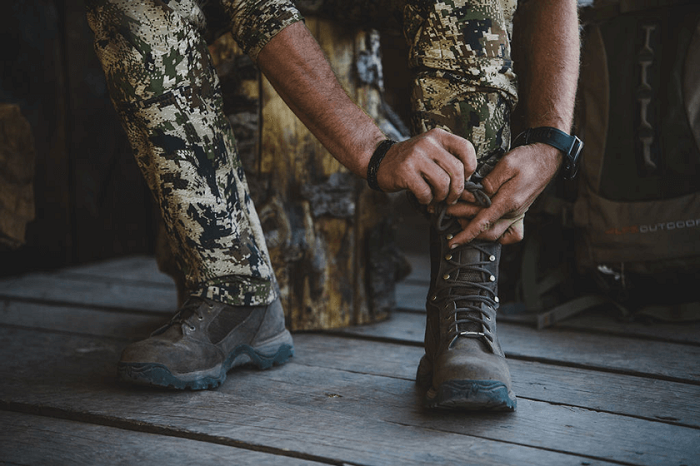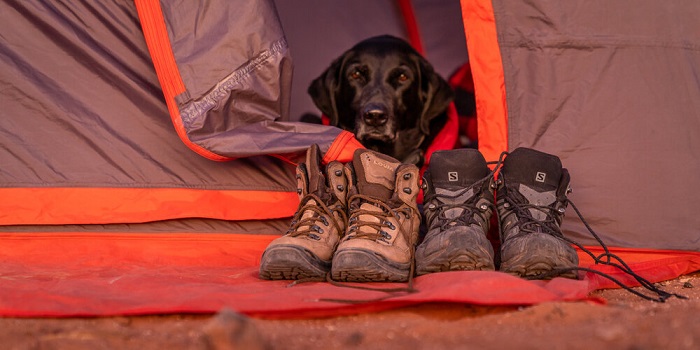Whether you’re going on a short day walk or a multi-day backpacking trip, efficient, comfortable, and dependable hiking footwear is essential. While looking for a new pair of boots, you’ll come to find that some retailers specialise in hiking boots, while others specialise in hunting boots. Others are more generic and may offer a mix of the two or some hybrid models in between.
Hunting Boots vs. Hiking Boots

How strenuous will your outdoor activity be? Are you going to be primarily on established paths, or will you be venturing off the beaten path, across streams, up ravines, and into thickets in all types of weather? These are the things to consider when you come across the hunting/hiking boot category. All boots have qualities that make them suitable for particular occasions, and there are trade-offs regardless of the boot or type you choose.
Certain scenarios provide a slew of difficulties, including unpleasant, dangerous, and even hostile settings and locations. Whether in a volatile combat zone, the untamed wilds of nature, or a huge industrial site. All of this may be quite taxing on our sensitive, otherwise unprotected feet. The premium line of hunting boots is regarded as the most durable variation of footwear for hiking on the market.
Hiking boots are lighter in comparison to hunting boots, with lower collars for putting on more miles, but hunting boots are heavier in build for walking in off-trail circumstances. Hiking shoes differ from trail runners in the stiffness of the midsole. Although a bit heavier, the stiffer flex provides a more solid platform when walking on rough trails, and it helps prevent bruising the bottom of the feet from stepping on sharp rocks.
Heavier than running shoes but lighter than backpacking boots, they’re suitable for hiking and backpacking with a moderate load on rough terrain. If you want to stay on the trails, a hiking boot is a better option. For those rough areas, you’ll enjoy the reduced weight and ankle support of the boots, and they’ll keep your feet cooler as well.
Trail Running Shoes
For three-season hiking, trail runners are the go-to footwear. Unless you’re going on a long hike in really harsh terrain with no prospect of replacing your shoes or going on a winter vacation in temperatures far below freezing, you should most likely be wearing trail running shoes. They provide the perfect mix of comfort, support, stability, grip, weight, and breathability.
Trail runners have stronger and more supportive midsoles, grippy outsoles, and synthetic overlays in critical areas like the toe box, lower sides, and heel. Trail running shoes, on the other hand, are usually more cushioned, breathable, and always lighter. If you spend most of your trekking time on reasonably smooth, well-maintained routes, road running shoes can be a good choice for a backpacking trip. Most hikers believe that trail running shoes are worth the relatively little weight penalty in tough and off-path circumstances.
Things to Consider Before Buying a Pair

With the differences stated above, we can move on to some features to decide on before purchasing your specialized footwear for hiking.
Synthetic vs. Leather Material
The cost, practicality, and endurance of a boot are all affected by the material used, but there’s no reason to believe that one is better than the other. Some of the reasons for choosing a synthetic or leather boot are based on personal preferences for one material over another, but we’ll approach this from a practical standpoint rather than a preference for one material over another.
Due to its durability and availability, leather has been the material of choice for boots since the dawn of time. Leather has been used to manufacture boots by premium hand-crafted boot businesses for decades, and there are still many instances where leather is chosen over synthetic material for boots. One of the major reasons why many people prefer leather to synthetics is its malleability.
Over time, a good leather boot may mould to your foot, giving it a glove-like fit. Leather is a tough material that can withstand a lot of punishment from rocks, trees, and other harsh items that your feet will undoubtedly come into contact with while hiking in the mountains. A good pair of leather boots may endure for many years if they are properly cared for, and they can frequently be re-soled to make them last even longer.
As you may have noticed, modern climbing boots made of leather are rare these days. For starters, synthetic materials are often lighter than leather, making a synthetic boot equal to a pair of leather boots, but a lot lighter. Synthetic uppers are less prone to stretching and moulding over your feet, yet they can provide considerable benefits for backcountry hunters. Synthetic materials have also caught up to leather in terms of durability thanks to technological advancements. While a synthetic top material cannot be rehabilitated with beeswax like a leather boot, it may last just as long as, if not longer than, a leather boot.
Insulated vs. Non-Insulated Boots
Most hiking boots are designed for summer travel since the great majority of hikers undertake most of their hiking during the warmer months. Hunting, on the other hand, is frequently done in the shoulder seasons or even in winter-like circumstances, thus hunting boots typically feature insulation, which adds a little bit of weight to the boot.
If you want hiking boots with insulation, you should seek “winter hiking boots” or “backpacking hiking boots.” Hiking boots with insulation are nearly entirely distinct from regular “hiking boots.”
Because everyone’s feet sweat and circulate differently, some individuals can wear an insulated boot on hunts, while others would have their feet fully soaked. So if foot perspiration isn’t a concern for you, a minimally insulated boot could be a good choice. Hiking in hilly terrain, even with an uninsulated boot, will quickly get your blood pounding and your feet heated. However, there are times when wearing an insulated boot is essential, such as during tree stand hunting or when the weather is really cold.
The Boot’s Weight
When hiking, the weight of your gear may make a difference, especially on your feet. A heavier shoe can tyre you out quicker since you’re continually elevating your feet taking quite a toll on them, but a lightweight and flexible sole on a boot or shoe may promote a more natural stride. However, bear in mind that by opting for a lighter shoe, you may be sacrificing the lifespan and durability of the same.
There is a range of footwear for hiking that falls midway between hefty stiff boots and light low cut day hikers. It all comes down to where you’re going most of the time while keeping it as light as possible without sacrificing the support and durability of the boot.












